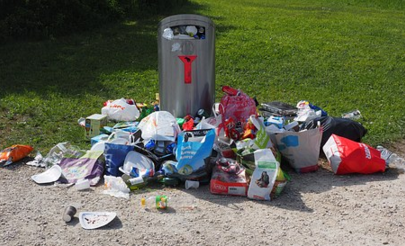The Waste Electrical and Electronic Equipment (WEEE) legislation is something that all businesses need to be concerned about, no matter how big or small, or what industry they operate in. If you are involved in manufacturing, importing, or rebranding new electronic or electrical equipment, you have to register with a producer compliance scheme. Not only this, but if you sell electrical or electronic equipment, or you need to dispose of it, you could have things you need to adhere to under the WEEE Regulations. Therefore, this applies to companies that merely need to get rid of office computers and such like. In this post, we are going to give you a brief overview of WEEE compliance for businesses, so keep on reading to discover everything you need to know.
If you sell electrical and electronic equipment, irrespective of whether you do so directly, online, over the telephone, or via mail order, you need to provide your customers with a way of disposing these items whenever you sell them a new version. Most companies do this by supplying a free take back service in-store, however, if you are not able to do this, you can set up an alternative take back service, yet this must comply with the WEEE regulations. You may join up with other distributors to provide this service.
What products do you need to take back from customers? You need to take back anything that is the same type of item as the one the consumer is buying from you, irrespective of where they bought the product and the brand of it. Aside from this, you must accept all small WEEE items, i.e. those that are less than 25 cm in length on their longest side, regardless of whether the person in question is buying anything from your business store. This applies to those whose sales area is larger than 400 square metres, with shelf space, display space and the aisle included. You must give customers 28-days to return a product, and this service has to be provided for free. If you are collecting from customers’ homes, you can charge to cover transport.
Not only do you need to provide this service, but also you need to inform your customers about it, and you need to educate them on recycling electronic products as well. You can also make sure your employees are educated with a flowchart for office recycling. According to the legislation, you have to explain the take back service you provide, as well as the process you utilise for recycling and reusing electronic and electrical equipment. You also need to explain the negative impact of not recycling this type of equipment, and why it is vital to separate this type of waste from other waste.
It is vital to adhere to the WEEE regulations that are in place. If you fail to comply, you could find yourself in deep water. You could be prosecuted, and fines up to $5,000 are dished out for non-compliance. Moreover, this could have a severe damage on the reputation of your business. It is not worth the risk. If you are struggling to find the time and resources to dedicate to WEEE compliance, there are companies who can take care of this for you.
Want to learn more?
- Just starting out? CLICK HERE
- Been working in your business for two years or more? CLICK HERE
We’re here to help you to take action just like we’ve helped thousands of other entrepreneurs, business owers and creative professionals all around the globe.
Now is the time to let your passion SHINE.
Now is the time to Make Tomorrow Today!
To your success,
Vinh Van Lam & Stuart Horrex





